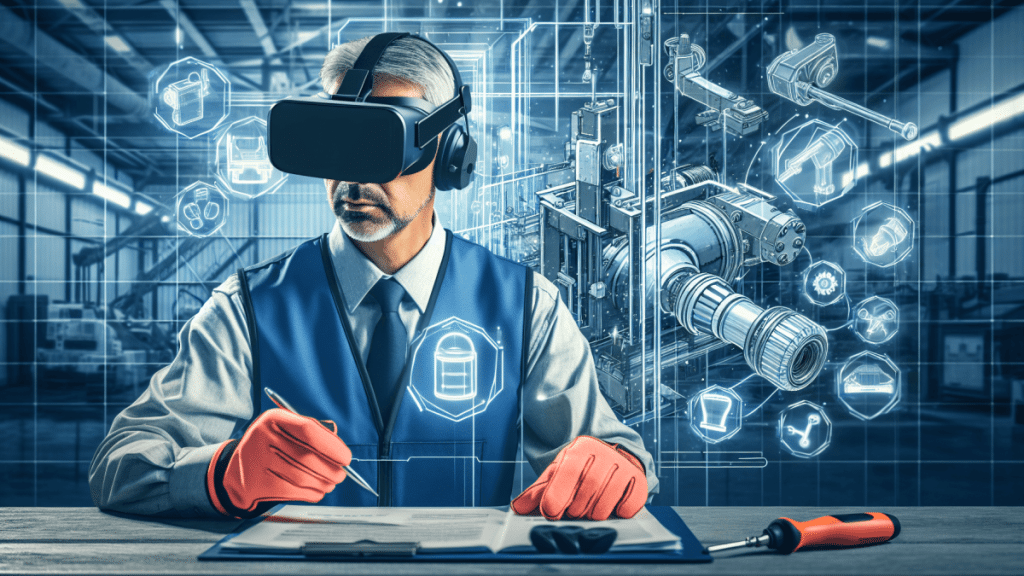In recent years, virtual reality training has transitioned from being a futuristic concept to a practical and powerful tool reshaping industries worldwide. Among its most impactful applications is VR training—a method that leverages immersive technology to revolutionize how businesses approach skill development, safety, and efficiency.
What is VR Training?
VR training uses simulated, interactive environments to replicate real-world scenarios for learning purposes. With a VR headset and intuitive controls, users can engage in hands-on training that mirrors their job roles without the risks, costs, or logistical challenges of traditional methods. From operating heavy machinery to mastering soft skills, VR offers a versatile and scalable solution for various industries.
Why Businesses Are Embracing VR Trainin
The adoption of VR training has surged, and for good reason. Here are the key benefits driving its popularity:
- Enhanced Learning Retention: Studies show that immersive learning boosts knowledge retention by 75% compared to passive methods like lectures or videos. VR engages multiple senses, making learning experiences more impactful.
- Improved Safety: In high-risk industries such as construction, energy, and healthcare, VR allows employees to practice procedures in a controlled, risk-free environment. For example, a lineman can learn to operate bucket trucks without facing real-world hazards.
- Cost Efficiency: While the initial investment in VR hardware and content development might seem steep, businesses save significantly on recurring costs for equipment, travel, and training personnel.
- Scalability: Unlike traditional training methods, VR can be deployed globally with minimal additional costs. This makes it ideal for enterprises with a geographically distributed workforce.
- Customizable Content: VR scenarios can be tailored to specific business needs, ensuring relevance and maximizing the value of the training.
Real-World Applications of VR Training
Businesses across industries are leveraging VR training to address unique challenges:
- Healthcare: Surgeons and nurses can practice complex procedures in a virtual operating room, reducing errors and improving patient outcomes.
- Manufacturing: VR enables operators to familiarize themselves with complex machinery without production downtime or risk of injury.
- Retail: Employees can develop customer service skills through interactive role-playing scenarios.
- Energy Sector: Companies like Avangrid and Toyota use VR to simulate dangerous situations such as electrical faults or crane operations, training workers to handle emergencies safely.
The Role of VR Vision in Advancing VR Training
At VR Vision, we are at the forefront of creating cutting-edge VR training solutions. Our platform, Vision Portal, empowers businesses to deploy immersive training seamlessly. With clients like Siemens, Coca-Cola, and Toyota, we’ve proven the transformative impact of VR training in real-world scenarios.
Key Features of VR Vision Training Solutions:
- Turnkey Solutions: High-quality VR content integrated with Learning Management Systems (LMS) to ensure a smooth rollout.
- Analytics-Driven Insights: Track learner progress and identify areas for improvement with detailed performance metrics.
- Customizable Simulations: Tailor-made scenarios that address the specific needs of each client.
Challenges and How to Overcome Them
While VR training offers immense potential, businesses may encounter certain hurdles during implementation. These include:
- High Initial Costs: To mitigate expenses, consider starting with a pilot program and scaling gradually.
- Technology Adoption Resistance: Employee buy-in can be achieved through proper orientation and highlighting the benefits of VR training.
- Content Development Time: Partnering with experienced providers like VR Vision ensures high-quality content with shorter turnaround times.
The Future of VR Training
The future of VR training is bright, with advancements in hardware, AI integration, and haptic feedback poised to enhance its effectiveness. As the technology becomes more accessible, we can expect widespread adoption across sectors, creating safer, more efficient, and more engaging workplaces.
Conclusion
Virtual reality training is no longer a novelty; it is a necessity for forward-thinking businesses. By investing in VR training, companies can equip their employees with the skills they need to thrive in today’s fast-paced world—all while saving time, money, and resources.
Ready to transform your training programs? Contact VR Vision today to explore how our cutting-edge solutions can meet your business needs.
